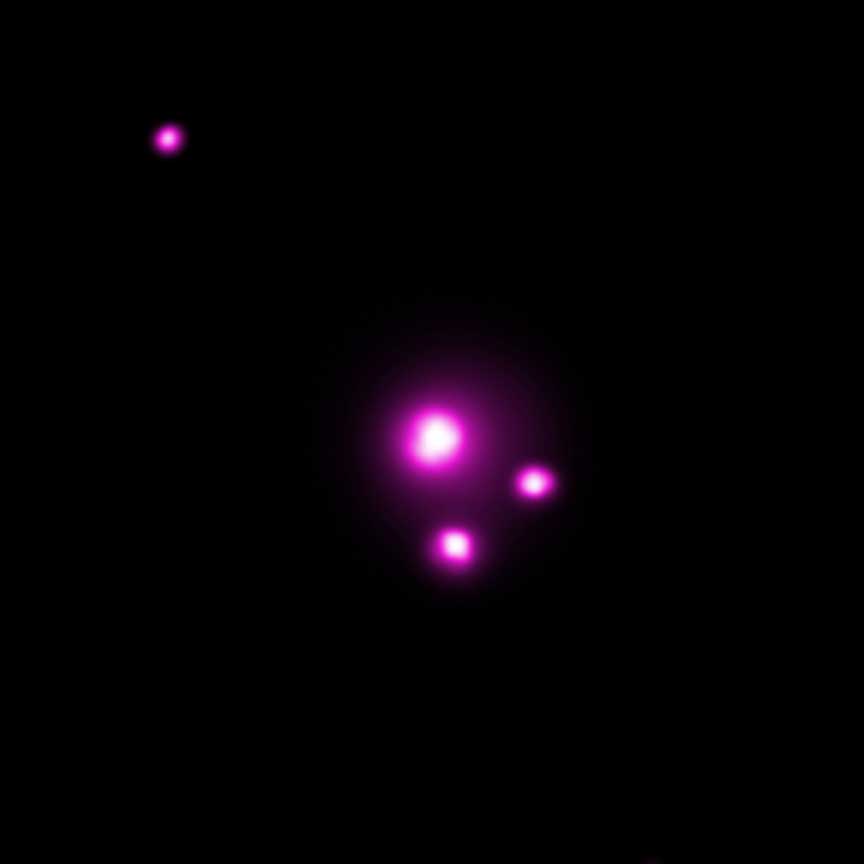Multimedia
Exo-eclipse in x-ray vision

Chandra image of HD 189733. The source in the middle is the main star and the source in the lower right is the faint companion star. The source at the bottom of the image is a background object not contained in the HD 189733 system.
The exoplanet itself cannot be seen in the Chandra image, as the transits involve measuring small decreases in X-ray emission from the main star. The authors estimate that the percentage decrease in X-ray light during the transits is about three times greater than the corresponding decrease in optical light. This tells them that the region blocking X-rays from the star is substantially larger than the region blocking optical light from the star, helping to determine the size of the planet's atmosphere. The extended atmosphere implied by these results is shown by the light blue color around the planet. Recent observations of HD 189733b with the Hubble Space Telescope have confirmed that the lower atmosphere of the planet has a deep blue color, due to the preferential scattering of blue light by silicate particles in its atmosphere.
For about a decade astronomers have known that ultraviolet and X-ray radiation from the main star in HD 189733 are evaporating the atmosphere of its closely orbiting planet over time. The authors of the new study estimate that HD 189733b is losing between 100 million and 600 million kilograms per second. This rate is about 25% to 65% higher than it would be if the planet's atmosphere were not extended.
At a distance of just 63 light years, HD 189733b is the closest hot Jupiter to Earth, which makes it a prime target for astronomers who want to learn more about this type of exoplanet and the atmosphere around it.
Chandra was used to make observations of six transits by HD 189733b and the team also used archival data from XMM-Newton for one transit. These results are available online and will appear in a future issue of The Astrophysical Journal.
Credit
X-ray: NASA/CXC/SAO/K.Poppenhaeger et al; Illustration: NASA/CXC/M.Weiss





